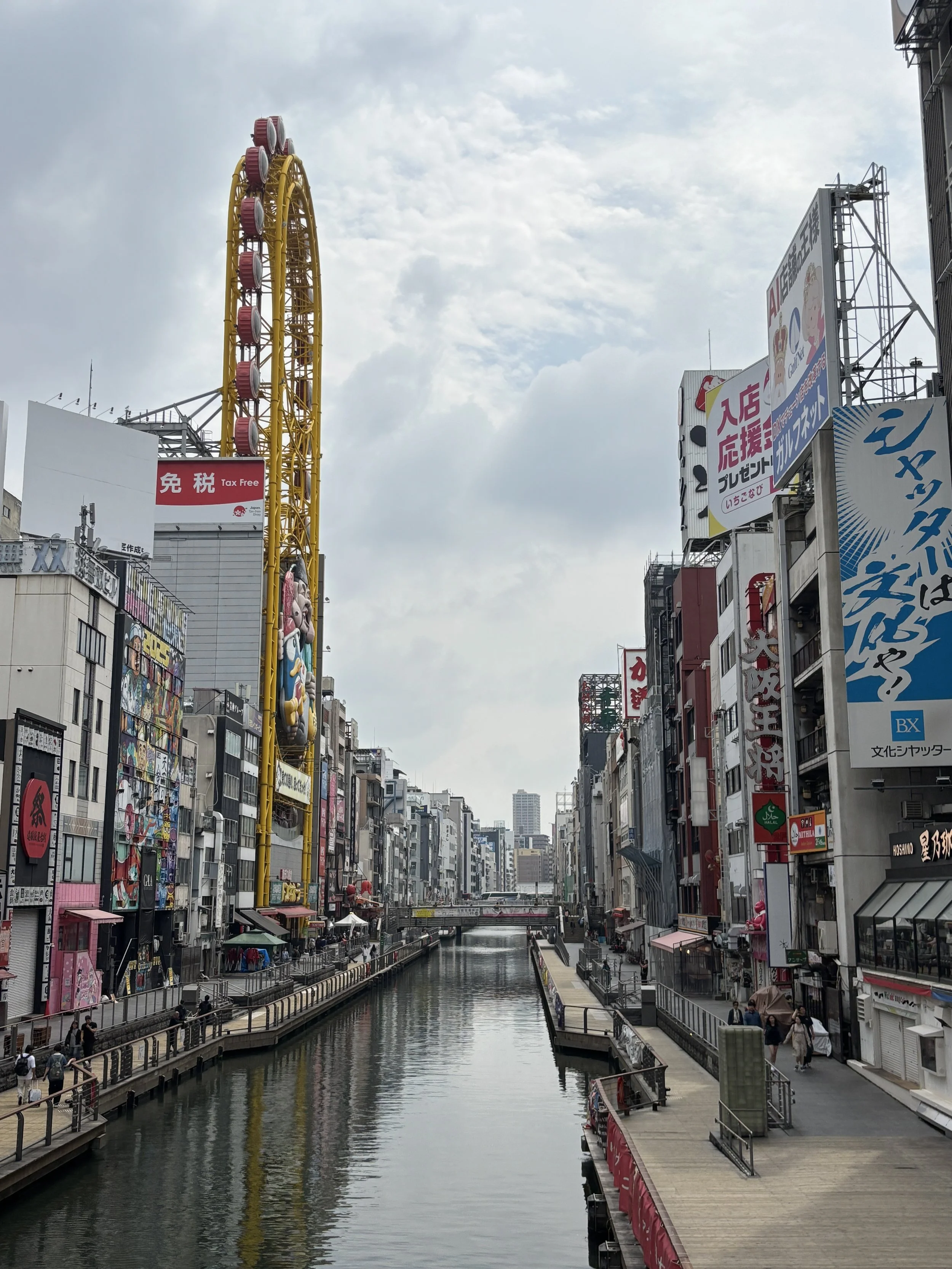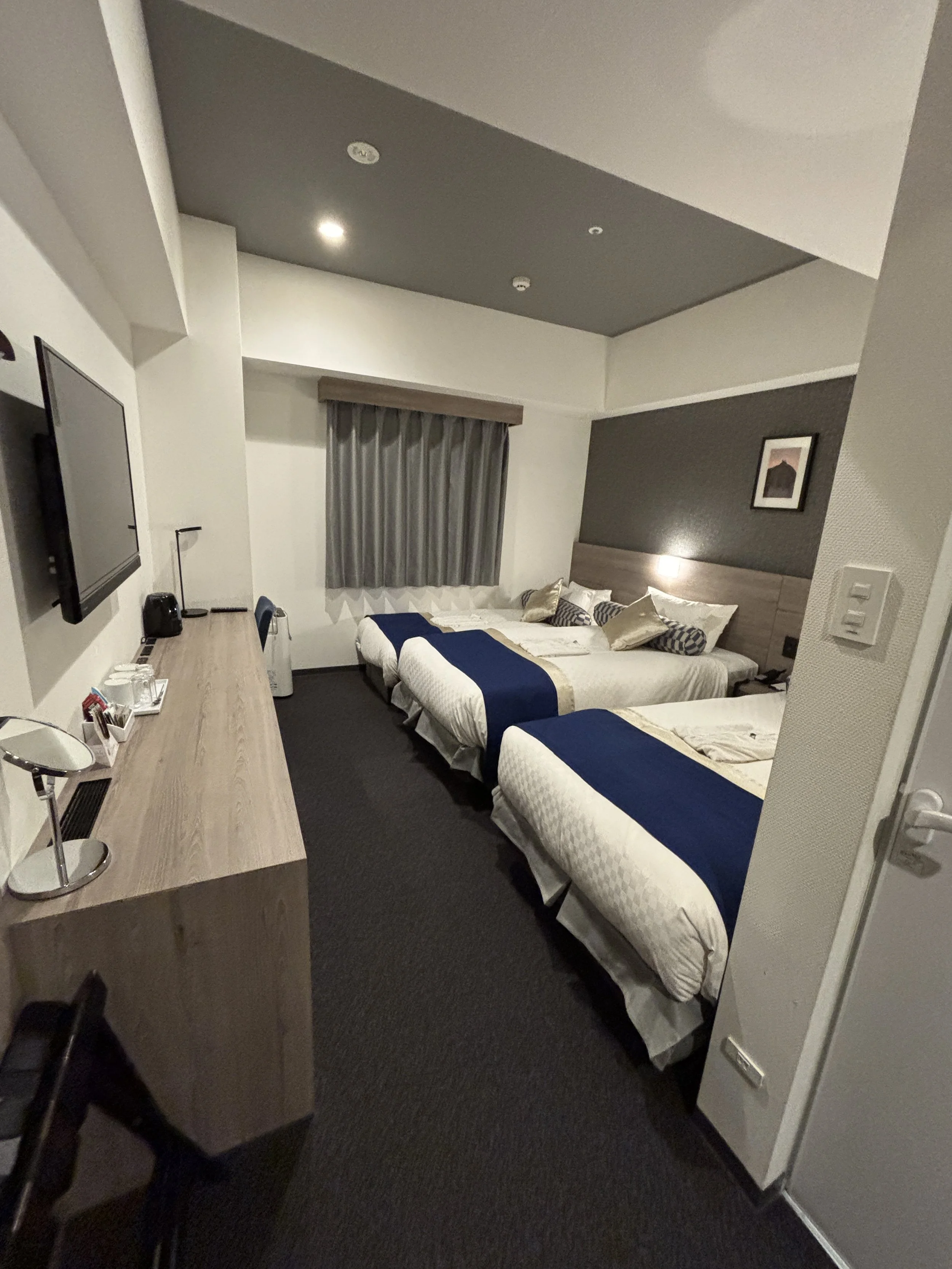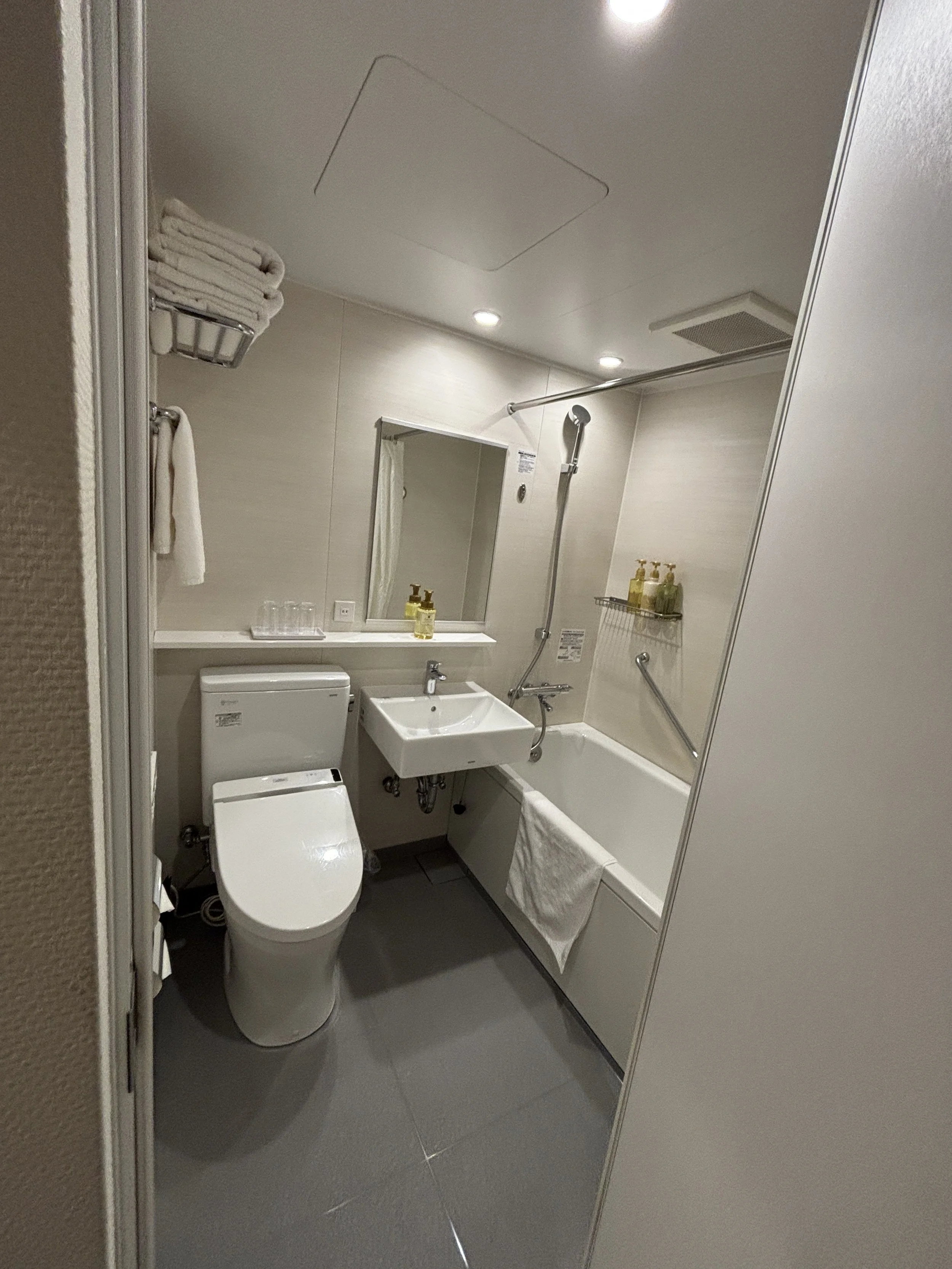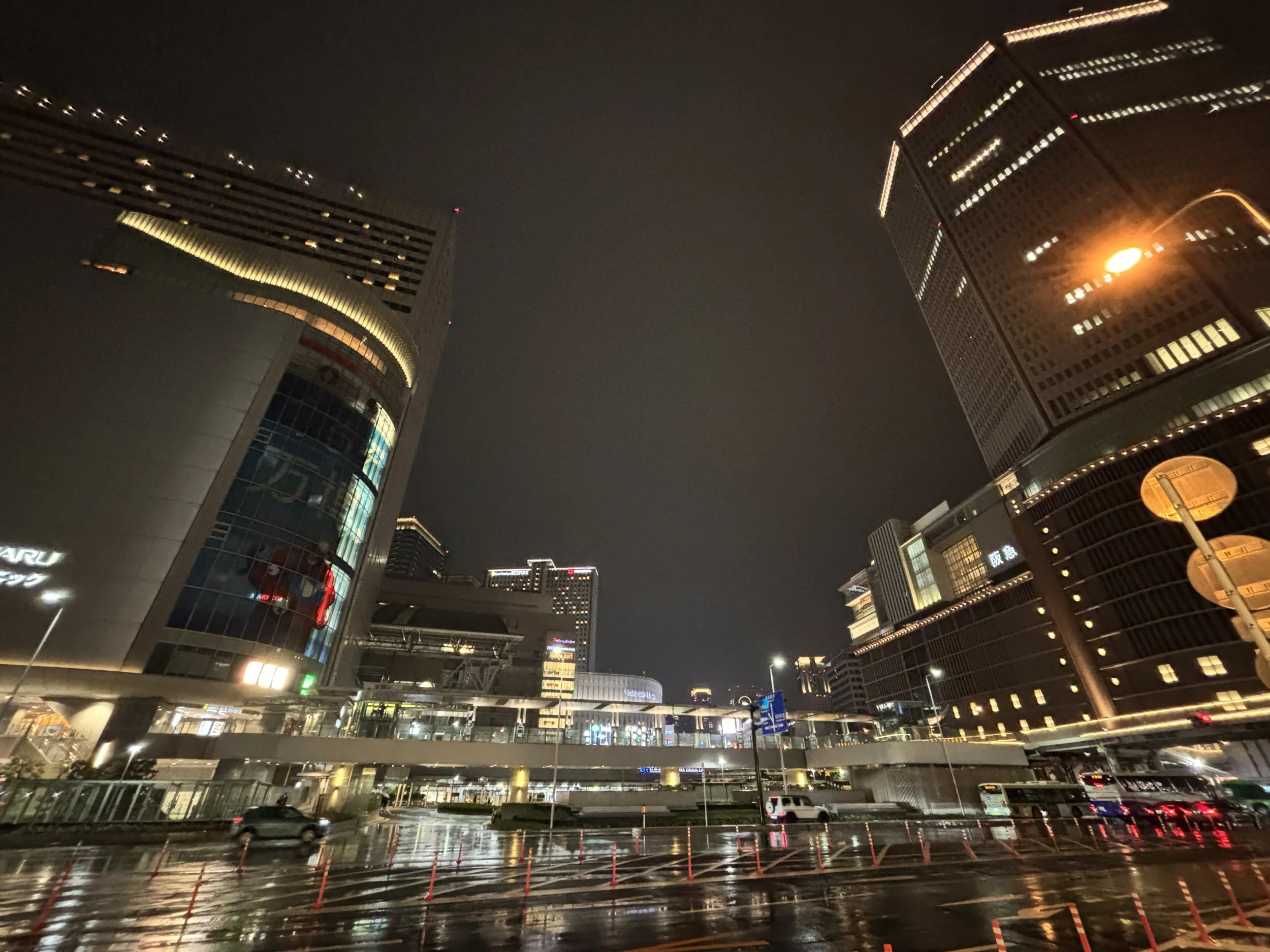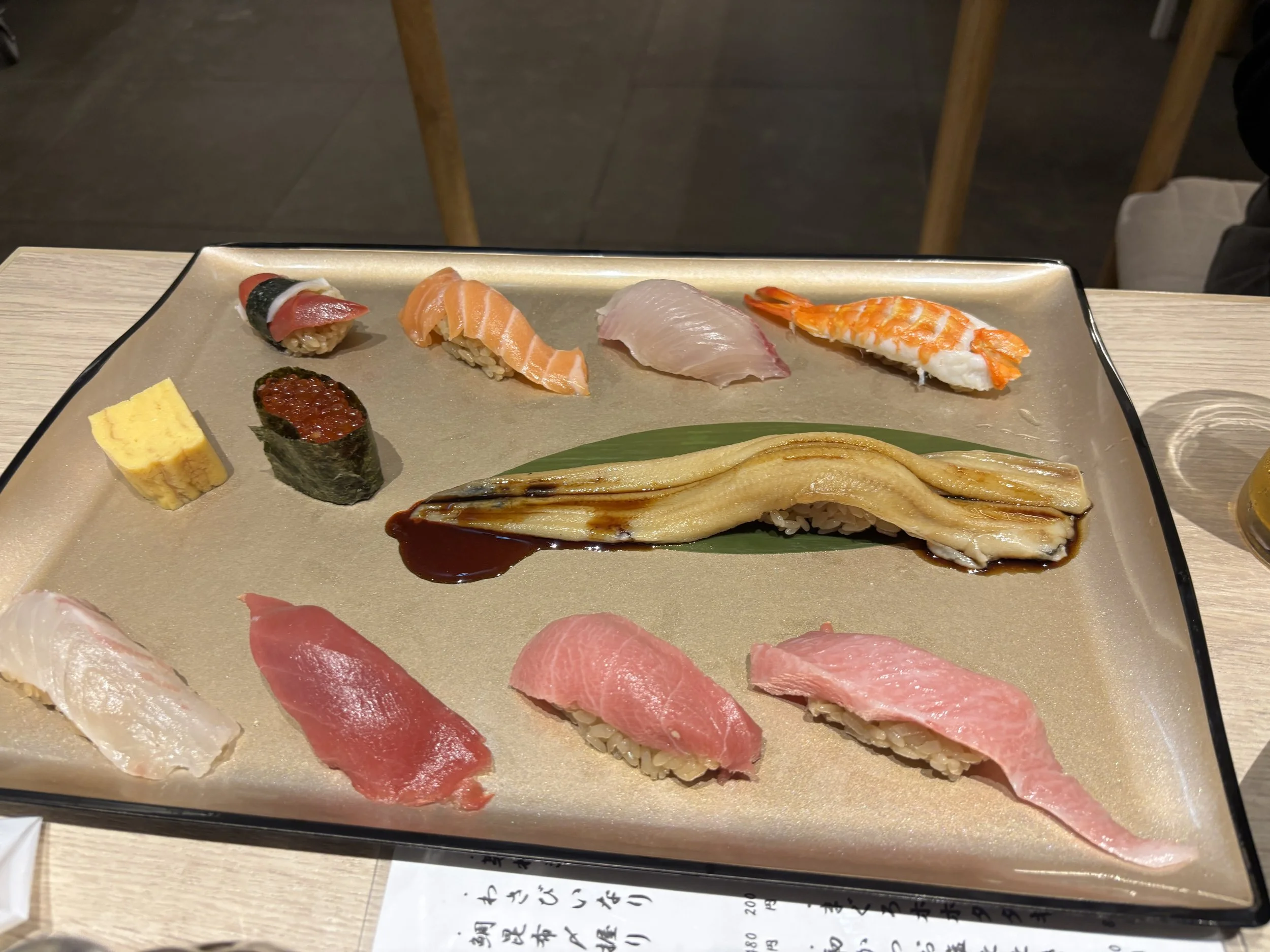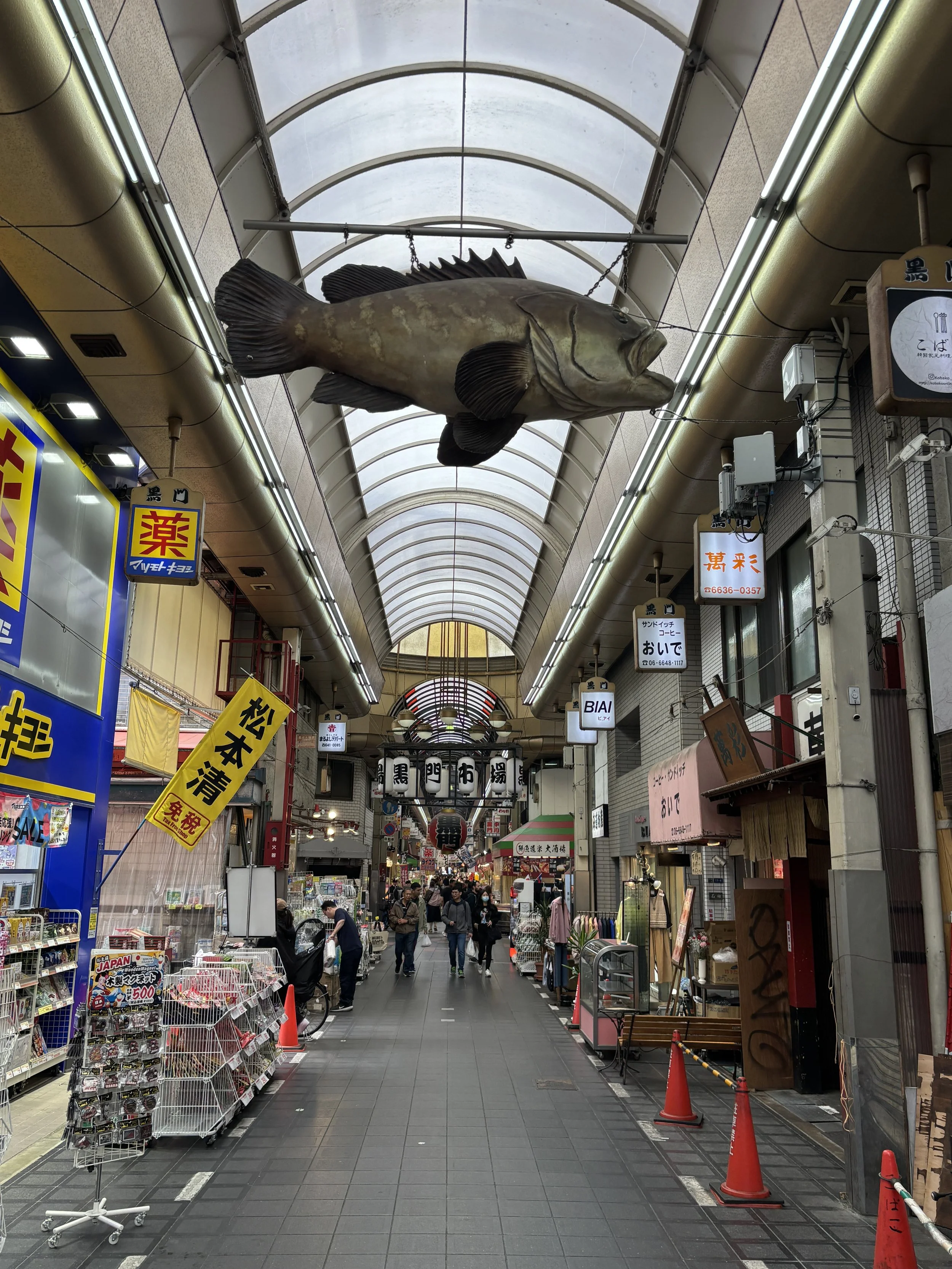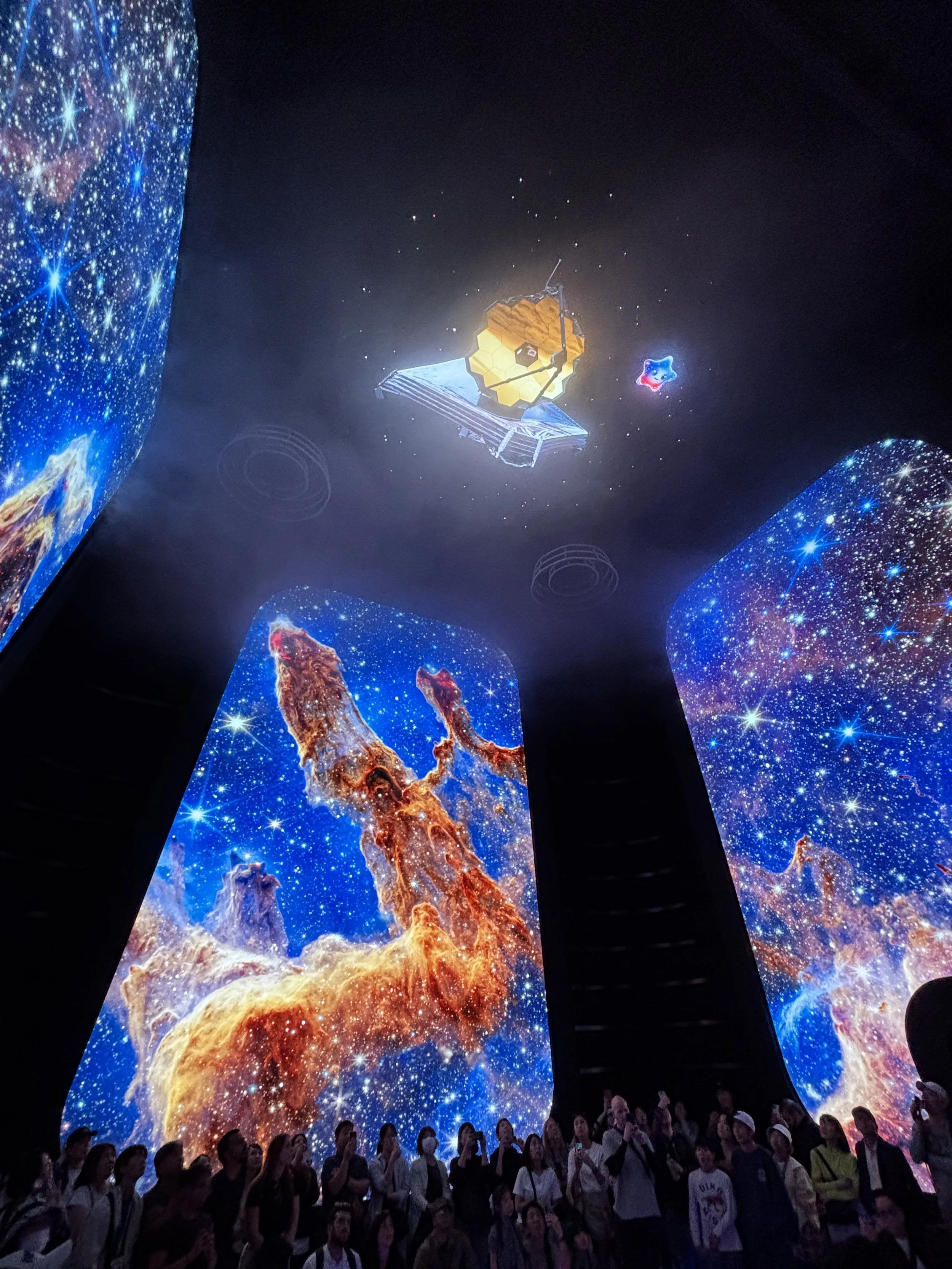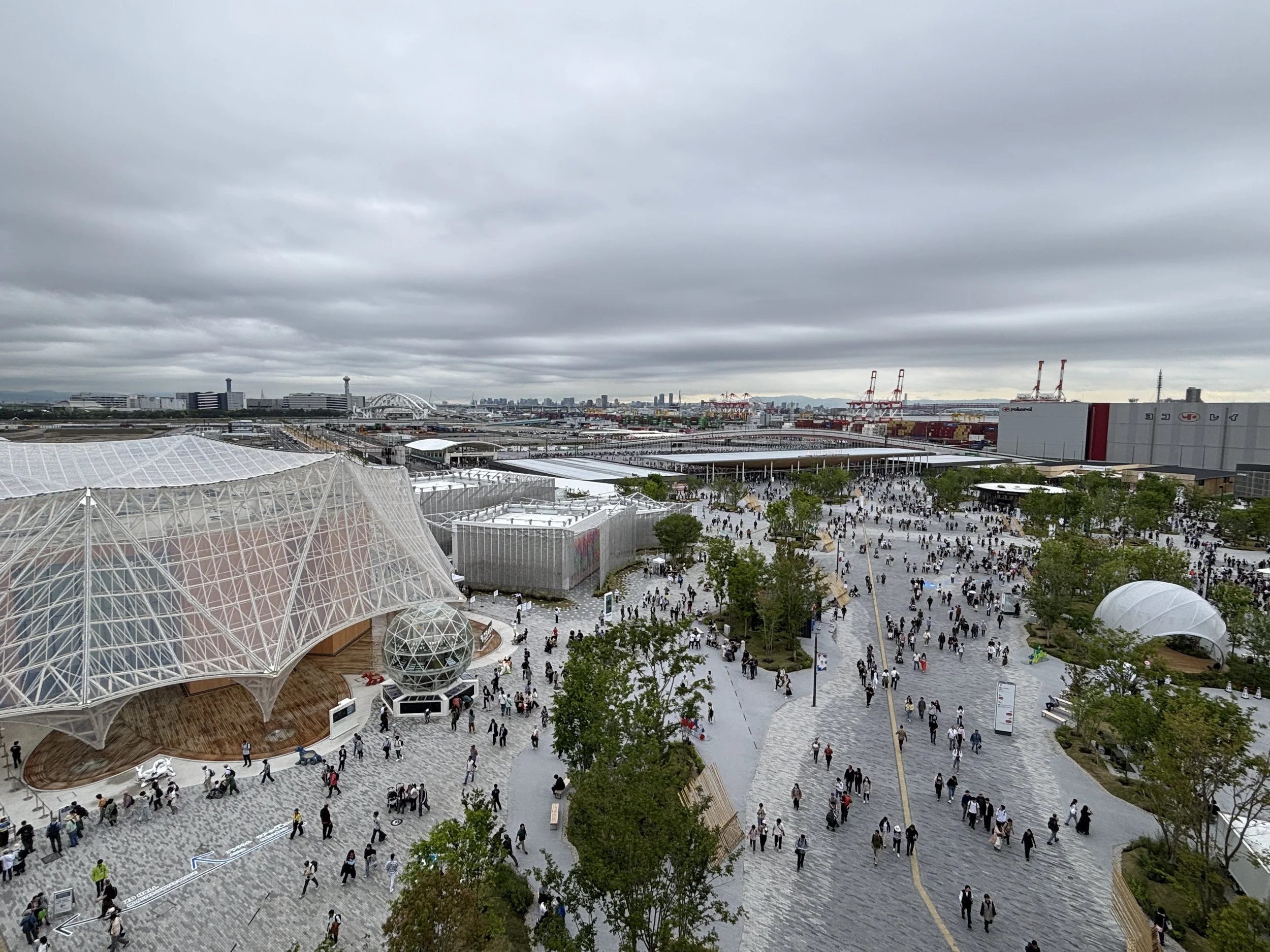Great value places to eat and sleep in Osaka
Dotonbori riverside, Osaka
Since my recent posts about the Expo 2025 in Osaka, and my reviews about the best pavilions to visit, have proven to be wildly popular and garnered quite a lot of interest from readers all over the world, I thought it would be useful to supplement them with some practical tips about where to stay and where to eat while in Osaka.
Now, my stay in Osaka was rather short and for most of its duration I was actually within the grounds of the Expo, so don’t expect a long post here.
However, my guess is that, if you travel to Osaka for the Expo 2025, you may as well spend one or two days in town and wander around a bit downtown.
So here are a couple of proposals that I hope can bring something of value. For the record, I checked a few other places to eat, but I am highlighting only the one I liked the most.
Great value accommodation in Osaka within easy reach of the Expo
Best Western Plus Hotel Fino Osaka Kitahama
1 Chome-7-17 Imabashi, Chuo Ward, Osaka, 541-0042
Ok, this is not the most glamourous of hotels. It is not even a traditional Japanese ryokan.
But this branch of the global Best Western chain offers a modern, functional option to stay in central Osaka for a price of around $100 per night.
The rooms are small, as is the norm in Japan, but clean and neat, as is also the norm in Japan! But perhaps the best attribute of this hotel is its extremely central location and its great public transportation links.
There is a metro station literally just around the corner that takes you either to the area close to Namba central station direct in around 15min or to the Osaka 2025 Expo in about 25min (with either with just one change of line or, if you walk 10min to the closest Green Line station, direct to Yumeshima Station, which serves the Expo).
A couple of notes: breakfast is not great and you don’t miss much if you skip it and go grab something at one of the eating places or convenience stores nearby.
There is another “Best Western Fino” hotel in Central Osaka, so make sure you get the right one!
Great place to eat Japanese food in Central Osaka
Osaka-la-nuit
Haneda Ichiba, Super Fast Fresh Fish Sushi, Umeda
This restaurant is located at the 9th floor of the Hanshin Umeda Department Store, which is right next to Osaka’s Umeda station, one of the largest in the city.
The restaurant is located in a sort of food court area, with several restaurants (although each has its own dedicated, enclosed space) and has great views of the surrounding business district.
We got there quite late in the evening, actually, and without a previous booking (something that often proved to be quite an issue in Japan), but they welcomed us very nicely. Also unusual in Japan, the manager was fluent in English (he lived in the US for quite a few years) and very kind throughout. He even advised us on the different types of sake and offered us a bootle on the house!
This is a sushi place which manages to combine coziness with an elegant, yet unpretentious setup, and offers also a rather good selection of entrants at rather reasonable prices. We decided to go on tasting mode and get a broad selection of what was in the menu, which you can see here.
And then, there is the sushi, of course, of which we got a couple of nice platters, all freshly prepared and served in generous portions.
A walk through Kuromon market and the Dotonbori area
Another place in Osaka where you can sample quite a few different culinary options is Kuromon Market, which is located near Namba station and the Dotombori riverside (another of the city’s highlights).
I don’t have a specific recommendation for this area, just walk around and check the different seafood stalls, many of which will prepare you som dish on the spot. You are likely to find something that looks tasty if you are into this sort of casual eating.
Also, I would like to add that we visited the area quite early in the morning, just as the shops were opening and the streets were rather quiet and deserted. So, we managed to get a rather postcard-like view of the area, with not too many people in the frame.
By all means, add a visit to this area to your Osaka schedule!
Kuromon Market
Visiting the Osaka 2025 World Expo: which pavilions to visit (II)
This is the second instalment of my Osaka 2025 World Expo chronicle.
While in the first one I shared some practical information and my experience at some major national pavilions, including that of the host Japan, in this post I will continue my walk around the Expo, commenting on several other pavilions, including some of the thematic ones (which do not belong to a specific country).
I would like to reiterate that, while I spent two very intense days at the Expo, this is an awfully short time if you wish to see it all well. I was fortunate that the Expo’s media team helped me get access to some of the most crowded pavilions, but even then it could get stressful at times and FOMO can become very real. So, if you have the chance to spend some more time that that, all the better!
By the way, just as in the previous post, the pavilions are not presented in a particular order here. I have devoted more space to talk about the ones I managed spend more time in or that made a more notable impression on me, but I have no recommendation about the order of visits. I guess a lot depends on crowds and slot management at the time of the visit.
Let’s start this second part of the Osaka Expo tour with the pavilions of the two superpowers of our time, China and the USA, to then move on to other interesting stuff.
The Chinese Pavilion
As expected, China’s is one of the largest pavilions at the Osaka Expo and it is also rather beautiful, with the outer wooden structure mimicking the shape of an ancient scroll and an spacious and tastefully laid out interior.
What I found interesting here is that there is a combination of history and modernity.
The ground floor devoted to the early eras of Chinese civilization, including some interesting archaeological samples and renderings and depictions of ancient Chinese cities, while the upper floors showcase modern technology and projects China is undertaking in fields such as urban planning and development, space or deep sea exploration.
USA Pavilion
The USA pavilion is designed to be visited in guided groups, which leads to some rather long queues forming outside. Basically, one group comes in, does a circuit inside the pavilion and then another group comes next.
There is at first an enthusiastic welcome address by one of the guides which introduces visitors to this tiny animated star that acts as a “virtual guide” throughout the visit.
Then we went through a series of exhibits which are very focused on highlighting the role the US plays as a major hub for education and attracting highly skilled talent and also the US diversity of landscapes.
Finally, what I think was the most interesting and visually stunning part was devoted to space. The visit ends with a projection that simulates a space launch from the point of view of the ground and, next, as if you were in orbit. This was quite well done and I think it is the most remarkable part of a pavilion that, otherwise is a bit underwhelming considering how many things the US can proudly highlight.
Italy and Vatican Pavilion
This pavilion has some truly interesting stuff, as it tries to link the wonders of the Renaissance with modern Italian technology, although crowd management is unnecessarily (in my opinion) inefficient. There are bottlenecks in the visitors flow that lead to queues inside the pavilion, as they force people to use a relatively small elevator to move within two parts of the exhibit (which could easily be linked by a staircase). Italy shares its pavilion with the Vatican state, which has brought a real Caravaggio painting to Osaka!
Nordic Pavilion
This is a joint pavilion by five Nordic countries (Denmark, Finland, Iceland, Norway and Sweden). It looks more impressive from the outside than in the inside. Despite a very enthusiastic guide which engages the visitors while queueing, there is not that much to see inside.
The main theme is “trust”, a value that these countries share with Japan, but to be honest, I didn’t find the exhibits very engaging. Interestingly, the pavilion’s shop seems to be quite popular and appeared to be doing good business selling Moomin-themed merchandise and other Nordic-inspired stuff.
The Common Pavilions
These are pavilions that host a myriad of small countries, mostly developing nations, in a trade-show-like lay out in which each country has a small booth rather than a full pavilion.
These common pavilions are a great place to get stamps for your Expo passport, but you can also find some interesting gems. I would highlight the pavilion of Pakistan, which has built its booth entirely of real Himalayan pink salt!
The Netherlands Pavilion
The Netherlands has a surprisingly large pavilion, considering the size of the country. The main theme is how the Dutch managed to tame the water and live in harmony with it.
Visitors are handed a little sphere which changes colour when you put it close to specific beacons throughout the exhibit (a prop similar to the one used by the German pavilion), you can see people holding these little light balls in the picture below.
Architecturally, the main element is a giant sphere at the center of the pavilion which is, actually, a large immersive screen.
Spain Pavilion
Spain’s pavilion is, I think, rather underrated. There were no big crowds or even a queue to get in, but I found it to be quite well done overall.
The entrance is set at the top of a flight of stairs, which offers an interesting perspective regardless of whether you look up or down. From the ground up the pavilion appears like an ascending slope, whereas from the top you have a nice view of the Expo’s ring.
In addition to showcasing some Spanish environmental technology, what I found most interesting is the first part of exhibit, right when you come into the pavilion. Here you can learn about the early contacts between Spain and Japan, which date back to the early 17th C!
In fact, there are several hundred people in southern Spain today with the surname “Japón”, descendants of Japanese people that settled in Spain as a result of those early diplomatic exchanges between the two empires some four centuries ago.
The Thematic Pavilions
In addition to the national pavilions, the Osaka Expo features also a number of other pavilions and areas that are dedicated to specific topics or sponsored by specific companies or organizations.
Despite the limited time I spent at the Expo, I managed to visit some of these.
The Advanced Air Mobility Station
This was one of the pavilions that fell a bit short of the somehow inflated initial expectations it had generated. In fact, we had been even promised there would be eVTOL flight displays at the Expo and this is looking extremely unlikely at the moment.
In fairness, the whole advanced air mobility industry is currently undergoing a cure of realism after over-hyping its progress a bit in the last few years. Some investors and analysts have even published some pretty damning assessments of the eVTOL space, not least of Archer, one of the companies exhibiting in Osaka.
Having said that, the pavilion offers an immersive experience, courtesy of Archer and its local partner, Japan Airlines, which make it well worth the visit and acts as a great introduction to the world of eVTOLs for the general public.
I have written in more detail about the Archer-Japan Airlines experience at the Osaka Expo on this other post on aviation site Allplane, so I encourage you to check it out!
Null^2 Pavillion
This is a pavilion that could be qualified as futuristic or outright weird and it starts in the outside, where its walls visibly vibrate with sound. When inside, the whole point, it seems, is to create some sensorial experience through the use of mirrors, light and sound.
I am not sure I got it, but, in any case, an interesting experience. Go for it if there are no queues.
The Blue Ocean Dome
The Blue Ocean Dome is one of the start thematic pavilions. It is in fact three domes, a large one, which contains an immersive screen experience and two adjacent smaller ones.
Each of the domes is built using a different material, the two small ones are made of bamboo and paper, respectively, and the larger one is made of carbon fiber reinforced plastic (CFRP). The use of these materials aims to recover a tradition in World Expos, which served as a testbank for innovative constructive techniques. These materials in particular were chosen because of their light weight, that lowers the environmental impact of construction.
The Blue Ocean Dome has been built by ZERI Japan, a non-profit environmental organization that focuses on oceanic preservation. The goal of this pavilion is to raise awareness about the issue of plastic pollution in the oceans and the need to for sustainability in the sea.
The bamboo dome (depicted above) illustrates the circulation of water (again the circularity concept that pervades the whole Expo!).
Whereas the main dome (above) is all about the ocean. Visitors get to experience a rather impressive immersive film that illustrates the environmental challenges that oceans and marine life experience as a result of pollution, particularly plastic waste.
The third (paper) dome is an exhibition space to showcase different projects and initiatives that Japanese organizations are taking part in with the aim of preserving and restoring the oceans.
Quite amazing to think that, after the Osaka Expo closes, the Blue Ocean Dome will be dismantled and reassembled in the Maldives!
Shows during the Expo
I wouldn’t want to close this post without a mention to the many shows and activities that you are likely to encounter during your visit to the Expo.
Many of these, like the “Cante Alentejano” that I featured in the first instalment of this Osaka Expo chronicle, are ephemeral and linked to a programme of activities that includes countless national days and other happenings. For example, here are some dances from, I guess, somewhere in the South Pacific, which I came across as I was wrapping up my visit to the Expo.
The one show that is predictably happening every evening is the projection on the “Shinning Hat”, one of the Expo’s iconic buildings, located near the East Gate and right next to the Japanese Pavilion.
And just like that, almost without noticing, my two-day stint at the Osaka 2025 Expo came to an end. I hope these notes are useful to those planning a visit before the Expo closes for good on October 2025.
Enjoy your future visit to the Osaka Expo!
Visiting the Osaka 2025 World Expo: what to expect (I)
Osaka, Japan’s second largest city, is the site of the 2025 World Expo. And, while I have always take this massive events with a pinch of salt, I think this one is well worth a visit and a perfect excuse to visit Japan and combine it with other interesting sights in the broader Osaka-Kyoto-Nara area (which will be the subject of another blog post soon).
What’s more, I’ve got the impression that Osaka is somehow of an overlooked destination when it comes to Japan. It may not be the capital city or have the historical richness of Kyoto, but it is actually a great metropolis and this Expo rightly puts it in the map.
So, in a two-post series I am going to try distil my impressions of the Osaka 2025 World Expo and I will share, as well, some practical insights about how to get to the Expo and what to do while there, particularly if you have limited time, as it was my case.
Getting tickets for the Expo
First of all, you will need to get tickets. And I suggest you start looking for them well in advance.
The Osaka Expo has a system of shifts, so the ability to visit certain pavilions and the Expo itself is organized by time slots. I booked some three weeks in advance and, while there was broadly good, but not total, availability for the Expo itself, it was hard to find them for some of the top slots.
You can then enter a lottery system that allows you to request access to certain pavilions that have already been sold out.
And this is the point at which I will lay out my strongest criticism of the Osaka Expo: the official website is a mess and, at points, thoroughly unintelligible. I have noticed that Japanese websites (same with the official railway companies websites) are quite different in their approach to processes and flow to what we are used to in the West (and most of the world for that matter), and perhaps his conforms to local practice, but I found the Osaka Expo site to be extremely complicated to navigate from a user perspective.
The processes seem way more complex that they really should be, way too many steps, and the way information is expressed is far from helpful. It takes a while to understand what is going on and where you should be clicking. So arm yourself with some patience if trying to book tickets!
Also, that lottery system I was referring to earlier is sub-divided in different time-windows, so you may apply one week in advance or three days in advance, but all of this is explained in a rather complicated way and the process itself is not very clear. I tried using the system for some pavilions and simply gave up.
This is, I found, one of the paradoxes of Japan, which is super advanced in certain things, but then some processes seem like straight out of the 1990s and the early years of the internet.
Getting to the Expo from downtown Osaka
So, let’s say you have survived the booking site ordeal and made it to Osaka. Congratulations, because despite this initial criticism, the Expo is truly amazing!
The site of the Expo is a small artificial island just off Osaka’s port area (it looks like artificial islands are quite the thing in the Osaka area, since Kansai airport, the city’s international gateway, is also located on one, just as the airport in nearby Kobe, as well!).
The Expo has two public entrances: East and West. Most people come through the East one, which is located next to the Yumeshima (“Island of Dreams”) metro station. This is the end station of the green line, which takes you downtown (Hommachi and Osaka Castle area) in about 20-25min, so it is pretty accessible.
As pretty much everywhere in Japan, I recommend getting a Suica wallet card to move around in public transport.
Interestingly, while the station can get really crowded at peak times, like around 21.00 when the Expo prepares to close, crowd management is really, really good. In the evening we were channeled through a pre-arranged path between the Expo gates and the metro station and while there was a constant and rather significant flow of people, it never felt congested, we even had a decent amount of space inside the metro wagons. So, kudos to the Expo organizers in that regard!
Arriving at the Osaka Expo
Most of the Osaka Expo, including pretty much all the national pavilions, are enclosed within a massive wooden ring.
Yes, you read that right! There is a massive wooden enclosure several storeys high, which doubles also as a view point (more on this soon below!).
The structure itself pays homage to Japanese wood craftmanship. To learn more about the philosophy behind it and its significance, I recommend checking this CNN story out.
Sadly, because it is truly a thing of beauty, the whole ring will be entirely dismantled after the expo and the wood used for other purposes.
This intended re-use of the materials is, actually, pretty consistent with the core theme of the Osaka Expo: circularity and sustainability. You will see how this topic is pervasive throughout the Expo and many national pavilions have structured their content and message around it.
This ring, however, shouldn’t be thought of as a sort of barrier delimiting the inner core of the Expo, but rather like a sort of continuous gate embracing the whole extent of the Expo. In fact, the ring, as you can see above, is a totally porous element that you can walk through at pretty much any point.
There are also some pavilions, mostly the thematic ones, that are located outside of the ring, as are some services, such as shops and service facilities and the whole access area of the Expo. So people cross in and out of the ring all the time.
Here’s one recommendation: as soon as you get into the Expo’s grounds, head to one of the official shops next to the entrance and get yourself one of the “passports”. You will then be able to put a stamp each time that you visit one of the pavilions. It’s big fun, specially if you travel with children!
First thing to do at the Osaka Expo: Walk the Ring
So, I would suggest, first thing to do when you arrive at the Expo and after you’ve got your passport at the shop, is to go up the wooden ring for the magnificent views.
You can walk all around, but I’d say some of the best views are possibly from the east side, where several of the largest national pavilions are located.
The top of the ring is also a thing of beauty and it is structured in two levels, with some gardens in between. There are escalators, stairs and lifts connecting all together. You also get some views of Osaka’s port area from the top.
Here is a view of another section of the Expo, the lake where some water and music shows take place at regular times.
Some practical considerations about the Osaka Expo
Queues:
Yes, there are queues at most of the major pavilions and this is despite some of them having a system of advanced slot booking. So, arm yourself with patience and be strategic with what you wish to see. Also, I found the crowds to be much less towards the evening and some great pavilions, like Saudi Arabia and Spain could be visited with almost no waiting time, but this may just be anecdotal.
Cash:
Unlike the rest of the Japanese economy, the Expo is entirely cashless.
Food and drinks:
There are several eating options at the Expo. Some pavilions have bars, restaurants or food stalls. I had the chance to experience the Swiss and German ones, for example. However, I would say the best option quality-price is to visit one of the several food courts that dot the Expo’s territory. There is a diversity of fairly priced choices there and, while busy, it was not super crowded. Btw, there are also free water dispensers throughout the Expo too, so you may want to bring your own refillable bottle.
The Portuguese Songs
This is not part of the permanent programme of the Expo, but it was one of the first sights I came across, and a rather impressive one at that! As part of the “Alentejo Days” at the Portugal Pavilion in May (a number of activities dedicated to this region of Central Portugal), there were regular performances of “Cante Alentejano” throughout the day. I found it quite aesthetically interesting so posting a couple of pictures here (and may post a video as well when I find time to do the editing!).
Which Pavilions to visit at the Osaka 2025 Expo?
My time at the Expo was rather limited, since I just managed to squeeze in two full days before my return to Tokyo and Europe, but I think I made a rather efficient use of time. So, in this post and the next I am going to show some of the pavilions that I visited and what I found of interest in each of them.
Also, big thanks to the Expo media team that help me arrange some of the pavilion visits!
Japan Pavilion
As a host country, Japan’s pavilion is, of course, one of the hgilights of the Osaka 2025 World Expo. It is also the only national pavilion that is outside of the wooden ring, located just outside of it and close to the Expo’s east entrance.
Note that Japan’s is one of those pavilions that requires advanced booking, since, not unsurprisingly, demand is high!
In fact, the Japanese pavilion is also a wooden ring. Its structure reflects, as well, Japanese aesthetics and materials. Its main topic is…you guessed it…circularity and recycling!
So, the pavilion is organized itself if a circular way: you walk around its structure and find out about different technologies, particularly those reliant on microorganisms such as algae, that are being used to recycle stuff and make stuff while minimizing waste. The pavilion has even its own bio-power plant (which you can see in the picture above).
“Nothing goes to waste” is kind of the message that pervades the whole exhibit.
The role of algae in these waste recycling processes is highlighted throughout the exhibits. This way, we learned, for example, how algae can theoretically produce 50 times more protein per the same amount of water than beef or 36 times more than soybeans, or how they can absorb 14 times more Co2 than a cedar tree.
We were also shown how, through farming (see for example in the picture above how algae are move through tubes or, below, how they can be cultivated in ponds), all these algae and micro-organisms can be put to work to produce a number of advanced materials.
Interestingly, many of these transformation and waste-recycling processes depicted at the pavilion are taking place for real, on-site. So, you have some of them producing energy at the aforementioned biogas plant, but also being transformed into tangible items at a robot-assisted 3D printing facility. In fact, Japan’s Pavilion portrays itself as a “factory”, where waste is transformed and given a new lease of life as useful new things.
The pavilion showcases, as well, some Japanese tech made possible by advanced materials. Here in the pictures, for example, I show two of these: an airless, non-inflatable football ball made of semi-rigid components and an ultra-light mesh that helps space proves soften their ground impact.
The central space of the pavilion is taken by this breathtakingly beautiful, zen-style pond, which is fed by what was formerly waste water, which has been depurated on-site. We were told that after the process it is so clean that you could drink it!
German Pavilion
Germany’s pavilion is also all about sustainability and circularity.
Besides being one of the most interesting from the architectural point of view (like in the case of Japan’s here the circular shape delivers a message!), the star of Germany’s pavilion (and your companion during the visit) is this little cute kawaii-style mascots, called “Circulars”, which you are given at the entrance.
The circulars have sensors that make them change colour and talk to you about the different exhibits throughout the visit.
Besides showcasing multiple initiatives and companies in Germany that are active in the circular economy, developing sustainable solutions in different areas of life, the German pavilion itself is made in a sustainable way. Most of the materials are reusable or organic. For example, a special type of fungus with a wood-like appearance and consistency has been used to make some elements of the structure.
There is also a nice garden terrace, with some of the exhibits located outdoors.
South Korea Pavilion
This was a pavilion strong in visual effects.
A big part of the action is actually outside, with the pavilion’s facade being used as a massive video screen.
Inside, the highlight is a technology-themed futuristic, and also rather touching, video story set in the future. Aviation enthusiasts will notice how eVTOLs play a prominent role!
Pavilion of Saudi Arabia
As the country organizing the next Expo, in Riyadh in 2030, Saudi Arabia was one I couldn’t miss.
The first part consisted in a live music performance combined with a visual show projected onto the walls of the pavilion. A truly beautiful sensorial combination.
The pavilion is yet another channels for Saudi Arabia to showcase some of the massive projects it is investing in in order to turn the kingdom into one of the world’s top tourist destinations.
As it couldn’t be otherwise, there is also a whole section about environmental programs and the restoration work that is being conducted at several ecologically sensitive areas, such as the Red Sea, where, for example, coral is being 3D-printed in an effort to speed up reed regeneration.
France Pavilion
The French pavilion was somehow a hybrid between a museum and fashion boutique.
In great part this is explained by the fact that some major French luxury brands have sponsored it.
The resulting aesthetics are actually pretty cool and there are some exhibits that are quite eye-catching.
I’d say it gives a good sense of what is typically understood by French elegance and style. All in all, a great advertisement for the Japanese market of one of France’s greatest exports (after all, at the time of writing these lines, LVMH is, I think the most valuable publicly-listed French company).
France’s pavilion has also some nicely arranged outdoor space and an interesting scale model collection which merges French and Japanese iconic historical monuments (see below).
Brazil Pavilion
Brazil’s is a relatively small pavilion, with the main exhibit (below) focusing on the topic of environmental preservation. The inflatable, 3D shapes, represent people, animals and plants that come alive with movement.
There is also a video exhibit which highlights the numerous historical links between Japan and Brazil, a country that is home to several million people of Japanese descent.
United Arab Emirates (UAE) Pavilion
As the UAE was the site of the latest Expo, which took place in Dubai in 2022, I was also curious to check this one. As you can see, the exhibit was structured around palm-tree-like structures. The UAE’s fledgling space programme takes a place of honour.
Turkmenistan
This is an interesting one. Turkmenistan has one of the largest and more visually striking pavilions at one of the Expo’s prime locations. Kind of unexpected from a closed country, which gets a negligible number of visitors.
What I can say is that the people reacted with interest, queueing to get a rate glimpse of this little known country, which has been ruled by the same family since the fall of the Soviet Union.
The exhibits are quite a thing, starting by a presentation video that, let’s say, defies a bit the standard aesthetic canons in this genre of production.
There was also an exhibition of pretty much everything that is produced in Turkmenistan, from apples to detergent I guess this is how a Soviet trade show may have looked like sometime in the 1970s.
Interestingly, dogs feature prominently throughout both the presentation video and the exhibit!
Switzerland Pavilion
Besides appealing to a number of Swiss estereotypes (mountains, cows, cheese, etc), this pavilion was centered mostly on showcasing Switzerland’s technical prowess in a number of fields, from medicine to space tech.
The cake shown below, for example, is capable of producing electricity on its own, by combining the right ingredients and inducing a chemical reaction. Will this ever have a practical application? Maybe.
Swiss space tech had also a prominent space (pun intended!) in the exhibit. This is an industry in which Switzerland punches above its weight and one that Swiss institutions have been keen to promote internationally, since it is not that well known to general public.
What’s interesting also is the bar at the uppermost floor, with great views of the central area of the Expo. Prices are more Swiss than Japanese, though!
Stay tuned for the second part of the Osaka Expo walk around…
And this is all for Day One at the Osaka Expo! In the next instalment of this series, we’ll look at some other pavilions that caught my eye at the Osaka Expo, including those of superpowers USA and China as well as some of the thematic ones.
Watch this space!

